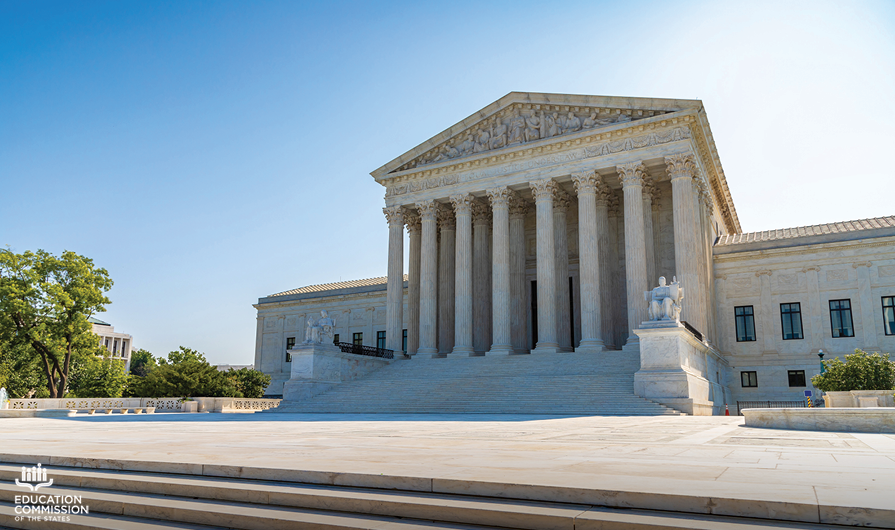Over the past 15 years, Education Commission of the States has read and summarized State of the State addresses delivered across the nation. In addition to cataloging governors’ education-related policy proposals and celebrations, we have published seven papers providing analysis of the top trends in education policy priorities outlined by governors.* This longitudinal data is available on our website, and our 2020 brief is available here.
Since 2020 is the year of perfect vision, we grew curious about how our dataset illuminates education priorities over time. Can we use our data to identify the evergreen education policy topics? Is it possible to track the rise of hot topics over time? We looked through 15 years of our analyses to find the answers.
Evergreen Education Policy Topics
Every year, five policy areas dominate governors’ education policy priorities: early learning, postsecondary affordability, school finance, teaching, and workforce development/career and technical education.
Early learning. Every year, the lifelong benefits of early learning programs are recognized in State of the State addresses. Governors have called for the expansion of funding and resources to increase capacity in their pre-K or kindergarten programs every year we have tracked their addresses. Additionally, governors often call for improved teacher quality and changing the age of entry into kindergarten.
Postsecondary affordability. Governors have pledged to address the cost of postsecondary education every year during this project. Generally, such proposals take one of two approaches: addressing the cost of college tuition or increasing access to financial aid resources. During the early years of this project, we noted that many governors spoke about access and affordability and praised tuition caps/freezes. Recent affordability comments have zeroed in on targeted financial aid programs and exploring free college tuition programs for qualifying students.
School finance. While school finance is often the most commonly mentioned education policy topic, this topic peaked in 2009 State of the State addresses. Immediately after the Great Recession, governors’ comments focused on the impacts of cuts to public education, finding administrative savings or making cost reductions. Over the past few years, governors have voiced their intention to review school funding formulas and address equitable funding.
Teaching. Since Education Commission of the States began this project, governors have focused on the goal of ensuring there is a highly effective teacher in every classroom, mostly via programs intended to fairly evaluate and compensate teachers. In 2005 — the first year of this project — many governors praised efforts to implement pay-for-performance policies. Recent years have reflected a slight change of focus; recruiting and retaining teachers in the face of teacher shortages are a top concern in 2020.
Workforce development/career and technical education. Policymakers and educators face a unique challenge in our modern, knowledge-based economy. They must anticipate the skills that students will need for jobs and economies that don’t yet exist. Every year, governors address the need to align learning opportunities with workforce needs. Recent remarks have noted the importance of filling workforce gaps and meeting future workforce demands.
The Rise of Hot Topics
Four trends — dual enrollment, school choice, school safety and student health — have risen in popularity since we began summarizing education policy priorities. Dual enrollment and school choice opportunities can provide students and families with educational resources that can help them meet their unique needs and interests, whereas school safety and student health policies concern additional services that schools are increasingly expected to provide for students.
Dual enrollment. From 2005 to 2007, dual enrollment opportunities — which allow students to gain high school and college credit simultaneously — were mentioned in State of the State addresses a total of eight times. In 2014 alone, 10 governors discussed advanced opportunities for high school students. In that year’s accompanying brief, we highlighted governors’ plans to increase funding for, or access to, dual enrollment programs.
School choice. Governors are interested in providing parents with education options that meet their families’ needs, often by allowing for charter schools to operate in their state. School choice first made the top trends brief in 2012, when we highlighted governors’ desires to expand the choice movement by passing new charter school laws or making the approval process easier. Governors also sought to ensure charter school performance and accountability.
School safety. Early in this project, it was rare to hear a governor speak about school safety. From concerns about discipline and misbehavior to concerns about the sale and use of drugs, school safety concerns varied widely. In 2018, seven governors mentioned school safety in their State of the State address. That number nearly tripled in 2019, when 18 governors identified school safety as a top concern. In that brief on top trends, we highlighted proposals to invest in school safety facility upgrades and task force recommendations to require active shooter training and threat assessments.
Student health. Similar to school safety, it was uncommon for governors to comment on student health. In 2008, a handful of governors noted the importance of addressing health nutrition and student obesity in schools. While governors continue to be concerned with ensuring that students have access to school meals, student health was emphasized in this year’s State of the State addresses. Eighteen governors remarked on the need to address students’ mental and physical health, and called attention to the connections between health and student outcomes.
It's interesting to look back and see how issues ebb and flow; some we expect will always remain top of mind and others will rise in response to current events.
*Education Commission of the States did not review State of the State addresses in 2010. We did not publish an accompanying brief in 2013.
















